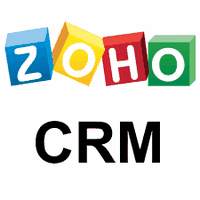 I was doing some research the other day for my lynda.com Outlook 2010 training videos and came across a pretty interesting story. In 2007 employees of the United States Department of Homeland Security used large CC: lists in place of a distribution list to broadcast messages to several hundred users. Many of the recipients in turn used “reply to all” to respond, causing the number of responses to that message to quickly expand to over two million messages, which in turn brought down the Homeland Security mail server.
I was doing some research the other day for my lynda.com Outlook 2010 training videos and came across a pretty interesting story. In 2007 employees of the United States Department of Homeland Security used large CC: lists in place of a distribution list to broadcast messages to several hundred users. Many of the recipients in turn used “reply to all” to respond, causing the number of responses to that message to quickly expand to over two million messages, which in turn brought down the Homeland Security mail server.
I spend a great deal of time working with my clients on creating e-marketing campaigns with the use of an ESP (e-mail service provider) However, much of the day to day e-mail that so many of us send can also be problematic.
For many of us, the Rules of Netiquette are just plain common sense. The tremendous increase in the amount of e-mail being sent through cyberspace has necessitated some basic rules of behavior or Netiquette. Here’s my list of the unofficial rules:
- Avoid large attachments. E-mail was not intended as a way to send really large attachments like program files or documents the size of War and Peace. Most e-mail clients will block their transmittal. If you are able to actually send the file, chances are that the recipient’s e-mail client will block them anyway. Worse yet, the large file might use up the recipient’s storage space and prevent them from receiving and additional mail.
- Use the BCC (blind carbon copy) or a Distribution List when sending a message to multiple recipients. By using the BCC you’ll protect the e-mail addresses of your recipients. You’ll also eliminate the necessity of having to scroll through lines and lines of names to get to the body of your message.
- Leave the jokes to the comedians. Maybe I don’t have a great sense of humor but I get annoyed when friends, acquaintances and enemies send me e-mail Jokes. I view them as just one more thing that I have to open and then clean out of my Inbox. Besides, I really don’t have the time to scroll all the way down to the bottom of a long message to find the punch line.
- Don’t send chain letters. Come on folks, didn’t that behavior disappear in high school? Do you really think that saddling twenty of your closest friends with one more piece of e-mail is going to bring you good luck, or that Microsoft is quietly sending out billions of dollars to folks like you to “test” e-mail?
- Don’t send emails containing links unless you are 100 percent sure of their origin. That link to the cute kitty picture might just set lose a virus on someone’s computer.
- Refrain from hitting Reply to All. Realize that the simple gesture can set of an ocean of e-mail. Do all 100 recipients of an e-mail really need to know that you’re happy that you received it?
In the example of the Home Land Security fiasco, a seamlessly innocent violation of just two of these rules created major havoc.
Be sure to let me know if you have a few other rules to add. I’ll send them to my friends they next time they send me a chain letter!
Karen Fredricks
blog@techbenders.com
www.techbenders.com




